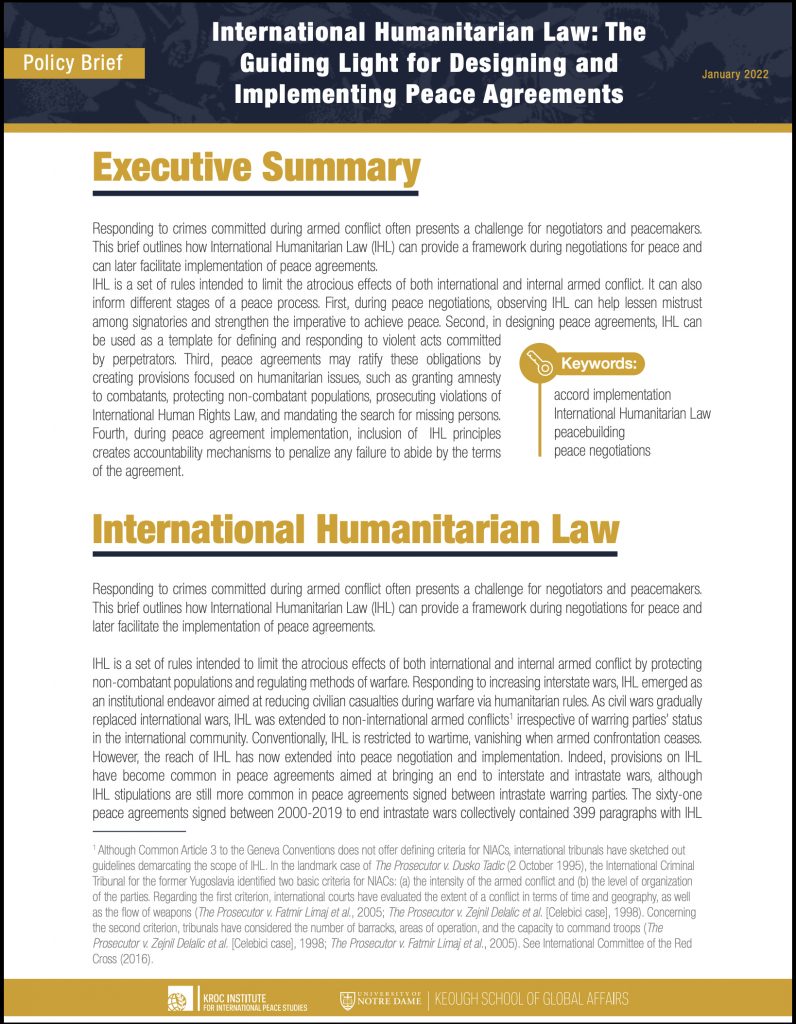International Humanitarian Law: The Guiding Light for Designing and Implementing Peace Agreements
Authors: Isabel Güiza-Gómez, Jason Quinn, Josefina Echavarría Alvarez
Publication info: Kroc Institute for International Peace Studies, Keough School of Global Affairs, January 2022
Full text: Read this brief at curate.nd.edu
Abstract
Responding to crimes committed during armed conflict often presents a challenge for negotiators and peacemakers. This brief outlines how International Humanitarian Law (IHL) can provide a framework during negotiations for peace and can later facilitate implementation of peace agreements. IHL is a set of rules intended to limit the atrocious effects of both international and internal armed conflict. It can also inform different stages of a peace process. First, during peace negotiations, observing IHL can help lessen mistrust among signatories and strengthen the imperative to achieve peace. Second, in designing peace agreements, IHL can be used as a template for defining and responding to violent acts committed by perpetrators. Third, peace agreements may ratify these obligations by creating provisions focused on humanitarian issues, such as granting amnesty to combatants, protecting non-combatant populations, prosecuting violations of International Human Rights Law, and mandating the search for missing persons. Fourth, during peace agreement implementation, the inclusion of IHL principles creates accountability mechanisms to penalize any failure to abide by the terms of the agreement.
Recommended citation
Güiza-Gómez, Isabel, Jason Quinn, and Josefina Echavarría Alvarez. International Humanitarian Law: The Guiding Light for Designing and Implementing Peace Agreements. Peace Accords Matrix Policy Brief Series. South Bend, IN: Kroc Institute for International Peace Studies, Keough School of Global Affairs, University of Notre Dame, 2022. https://doi.org/10.7274/nk322b9257h
